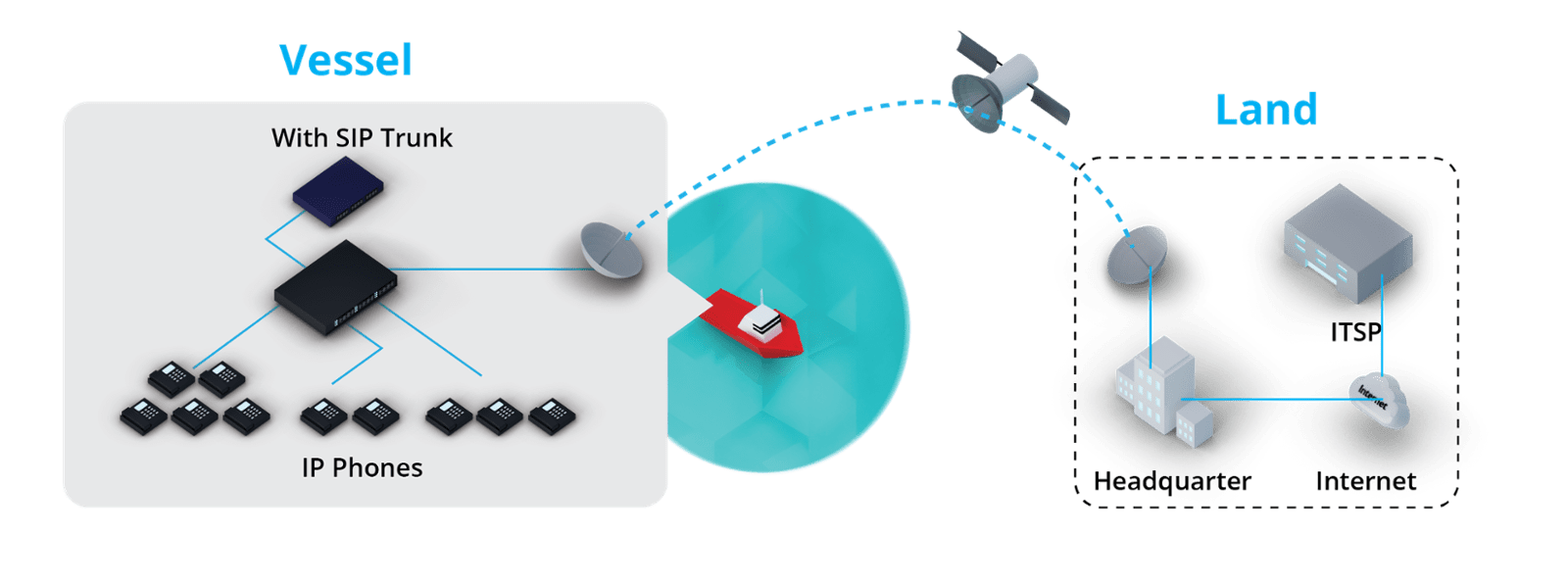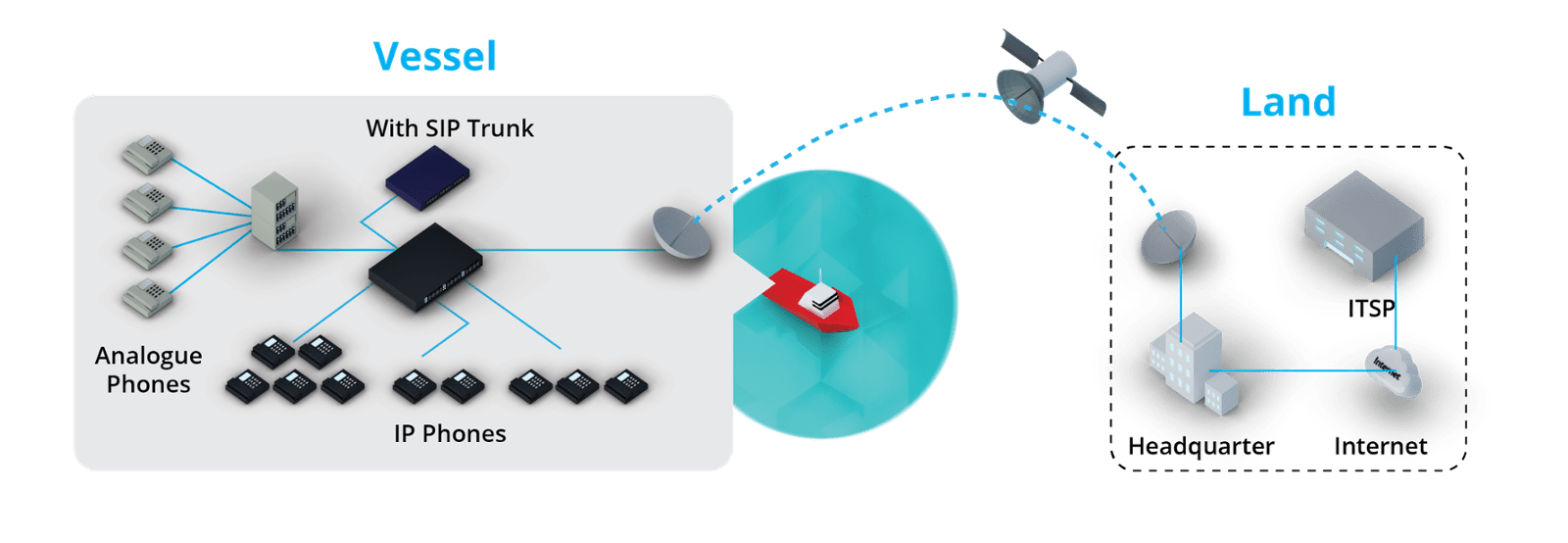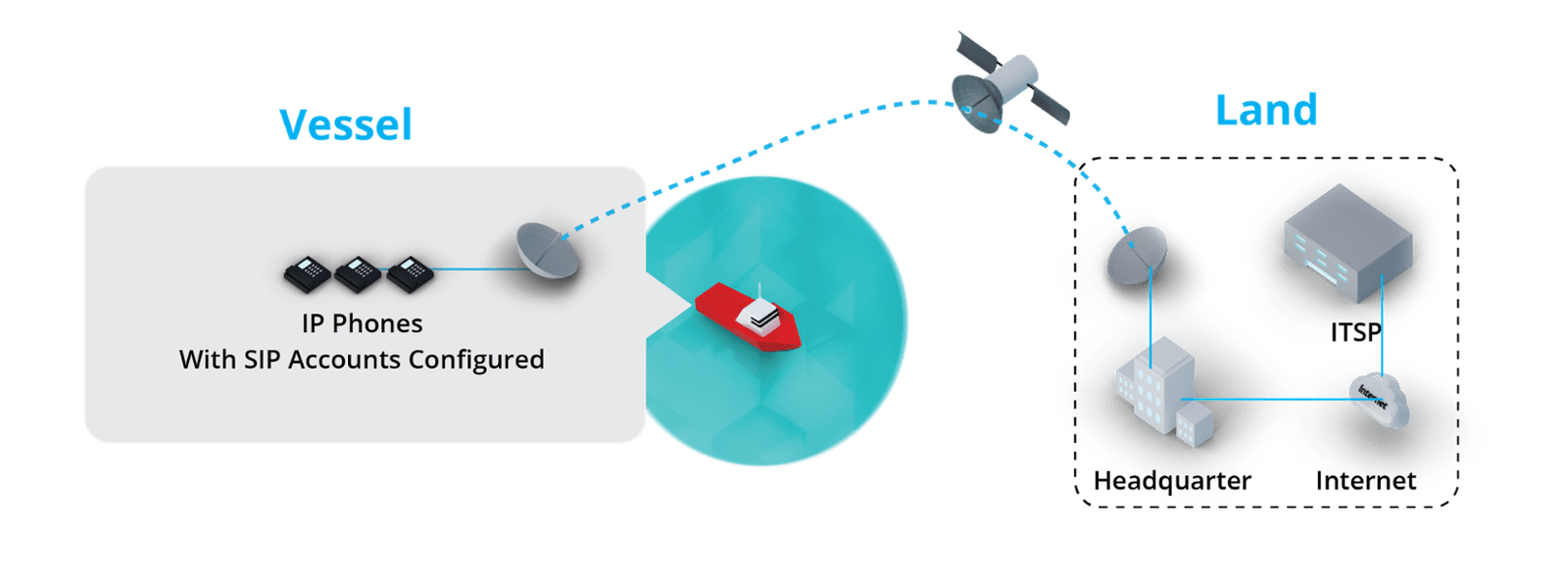Ship to Shore
A scalable phone solution allowing you to dial cost effectively to more than 60 countries from Singapore, Malaysia, Indonesia, Philippines, Hong Kong, and USA at ISDN quality.
A scalable phone solution allowing you to dial cost effectively to more than 60 countries from Singapore, Malaysia, Indonesia, Philippines, Hong Kong, and USA at ISDN quality.
A challenge for the Maritime Industry
Maritime facilities, vessels, ships, oil & gas platforms / rigs are notorious for their harsh environments where conventional communications are neither available or economically feasible. Brutal offshore climate and environmental conditions combined with remote and isolated locations means that communication lifelines are increasingly important to manage the ongoing fleet and vessel operations as well as maintain crew and passenger safety.
Oil and gas CIOs, CTOS, communications managers, network engineers and IT teams need to implement secure, fast and reliable communications systems to monitor drilling activity, track production and provide a ”ship-to-shore” communication to the corporate office onshore.
Beyond that, most ship operators have highlighted the importance of allowing crew to stay in contact with their family as a key contributor to a better quality of life on board. Offshore Communications are frequently named as one of the key drivers of crew retention as crews have come to expect their level of connectivity to Facebook, Skype, their online banking, and Netflix movies to match what they have at home regardless of where they are stationed. An oil and gas exploration vessel in the North Atlantic Sea outside Norway and a large-scale luxury liner crossing the Caribbean Ocean may be very different creatures, but they share a common need for vessel-to-land connectivity to transport VoIP voice and data traffic rapidly and reliably.
Each seagoing vessel – whether it is a large container ship, an oil tanker, or a luxury passenger liner – is dealing with many of the same communication challenges that any land-based organisation will be familiar with. The various segments – from commercial shipping, fishing industries and cruise liners, to naval and offshore oil and gas businesses – are looking at improving communications, from emergency telephones, providing employees with a better working environment, and utilising new applications that will help the business to run more profitably.
Maritime facilities, vessels, ships, oil & gas platforms / rigs are notorious for their harsh environments where conventional communications are neither available or economically feasible. Brutal offshore climate and environmental conditions combined with remote and isolated locations means that communication lifelines are increasingly important to manage the ongoing fleet and vessel operations as well as maintain crew and passenger safety.
Oil and gas CIOs, CTOS, communications managers, network engineers and IT teams need to implement secure, fast and reliable communications systems to monitor drilling activity, track production and provide a ”ship-to-shore” communication to the corporate office onshore.
Beyond that, most ship operators have highlighted the importance of allowing crew to stay in contact with their family as a key contributor to a better quality of life on board. Offshore Communications are frequently named as one of the key drivers of crew retention as crews have come to expect their level of connectivity to Facebook, Skype, their online banking, and Netflix movies to match what they have at home regardless of where they are stationed. An oil and gas exploration vessel in the North Atlantic Sea outside Norway and a large-scale luxury liner crossing the Caribbean Ocean may be very different creatures, but they share a common need for vessel-to-land connectivity to transport VoIP voice and data traffic rapidly and reliably.
Each seagoing vessel – whether it is a large container ship, an oil tanker, or a luxury passenger liner – is dealing with many of the same communication challenges that any land-based organisation will be familiar with. The various segments – from commercial shipping, fishing industries and cruise liners, to naval and offshore oil and gas businesses – are looking at improving communications, from emergency telephones, providing employees with a better working environment, and utilising new applications that will help the business to run more profitably.
Standalone setup
Standalone setup
A benefit with the Borderless VoIP MyPBX solution is that it is based on open SIP standards. This means that you can use the Borderless VoIP SIP function and transfer the calls free of charge over the internet. Using open standards also means that our solution is extremely cost effective when it comes to future maintenance and repairs. -You can easily swap out the Borderless SIP phone or MyPBX at a later date, without having to worry about being tied to certain phone or switch products via proprietary protocols. Session Initiation Protocol (SIP) is the most widely used protocol for controlling multimedia communication sessions such as voice and video calls over Internet Protocol (IP).
MyPBX, when deployed in the vessel with Borderless IP Phones will now allow crews on board to dial and receive calls from/to external numbers through our SIP (VoIP) trunk from ITSP. Management also has the option to deploy Pin Codes for designated IP Phones at common areas by subsidizing or selling them to crew members to call home to their families.
A benefit with the Borderless VoIP MyPBX solution is that it is based on open SIP standards. This means that you can use the Borderless VoIP SIP function and transfer the calls free of charge over the internet. Using open standards also means that our solution is extremely cost effective when it comes to future maintenance and repairs. -You can easily swap out the Borderless SIP phone or MyPBX at a later date, without having to worry about being tied to certain phone or switch products via proprietary protocols. Session Initiation Protocol (SIP) is the most widely used protocol for controlling multimedia communication sessions such as voice and video calls over Internet Protocol (IP).
MyPBX, when deployed in the vessel with Borderless IP Phones will now allow crews on board to dial and receive calls from/to external numbers through our SIP (VoIP) trunk from ITSP. Management also has the option to deploy Pin Codes for designated IP Phones at common areas by subsidizing or selling them to crew members to call home to their families.







